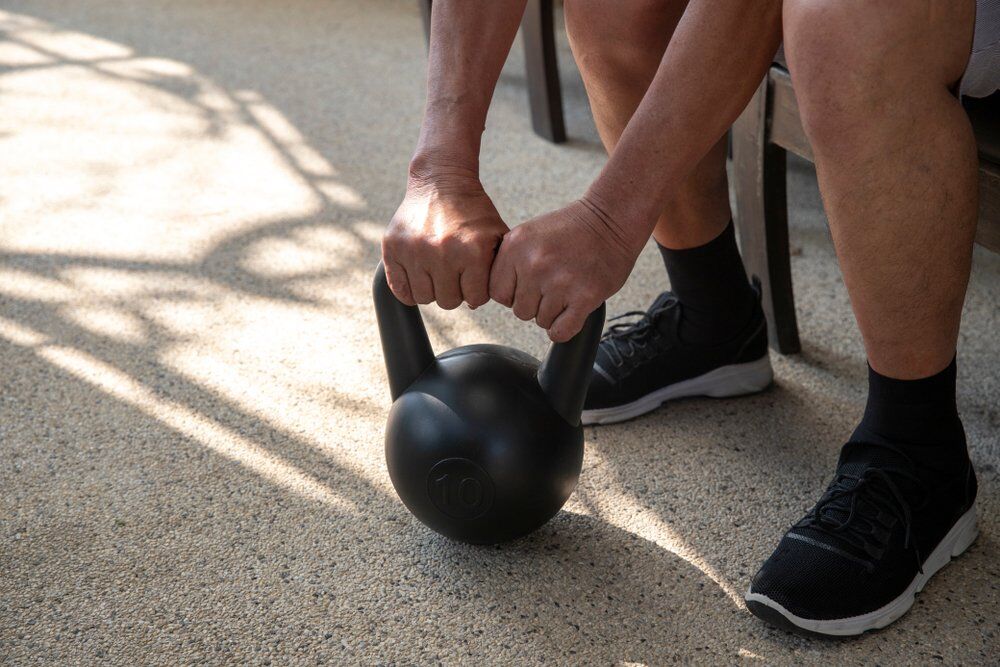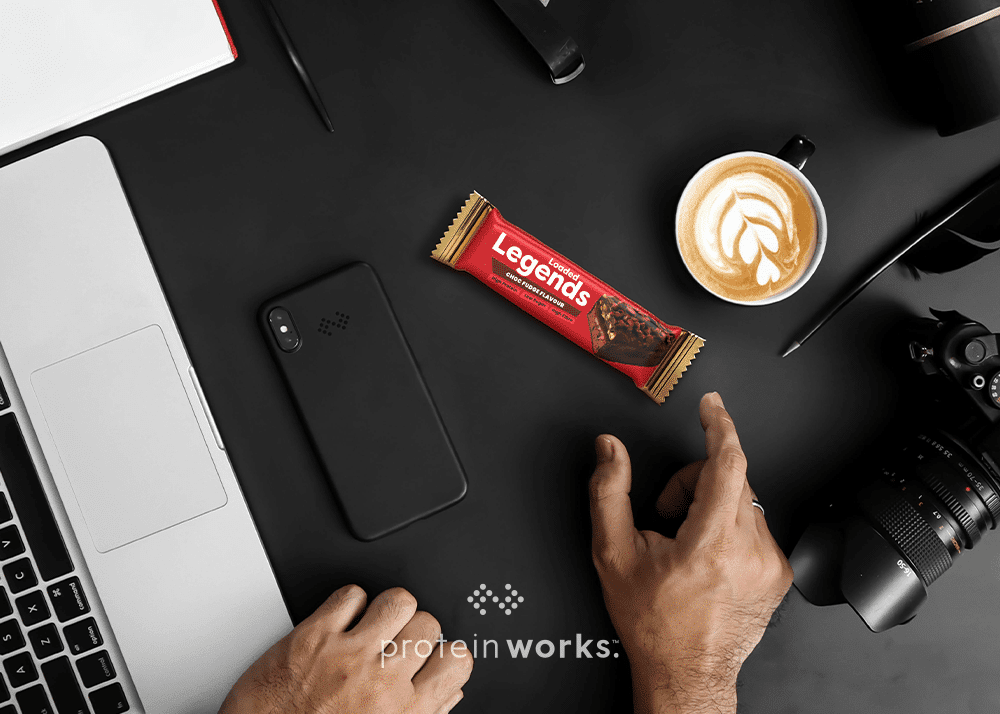With most of the UK now self-isolating at home, it may feel like exercise has dropped to the bottom of our collective priority list. While staying healthy and hygienic are of course top of that list, looking at the long-term, home workouts are going to become more and more vital as the weeks go on. In this article we will be looking at the humble kettlebell. A piece of exercise kit that takes up almost no space, can be easily used for a multitude of exercises, and is inexpensive to own. We will list some of the top kettlebell exercises you must try.
Picking the Right Kettlebell
Before we get started, we thought it would be a good idea to give you some advice on picking your kettlebell. Unless you’ve got an unlimited budget, you’re going to have to stick with your choice. There are way too many variables to give every reader a specific recommendation. But we’ll try and generalise things for you.
Men
- Beginner – 10kg to 16kg kettlebell
- Intermediate – 18kg to 24kg kettlebell
- Expert – 24kg+ kettlebell
Women
- Beginner – 8kg to 12kg kettlebell
- Intermediate – 14kg to 18kg kettlebell
- Expert – 18kg+ Kettlebell
When purchasing your kettlebell try to avoid the plastic ones or oddly-shaped ones. These are nowhere near as durable, and they aren’t as aerodynamic. Meaning that exercises such as the kettlebell swing cannot be performed correctly.
If you can afford two kettlebells, we’d recommend getting a very heavy one (for deadlifts) and a medium or light one for exercises such as swings, goblet squats etc …
Remember, if your kettlebell is too light you can always switch to single-arm versions of most exercises. If the kettlebell is too heavy, then … get stronger!
Top Kettlebell Exercises You Must Try
Exercise #1 Kettlebell Deadlift
This exercise is so underrated, perhaps because it is one of the less flashy kettlebell exercises out there. Place a heavy kettlebell on the floor and approach it. Place your feet either side of the bell and turn your toes out slightly.
Bend down to pick up the kettlebell, at the moment you should be in a hunched over position with both hands grasping the handles. Push your chest out and pull your shoulders back. This will create a flat back. Make sure that your heels are touching the floor and then sit down slightly so that you are at the right height to hold the handle comfortably.
This is the starting deadlift position. Keeping your arms straight, pull the bell upwards by pushing your hips forward and standing upright. You should now be fully upright with your hips pushed forward. To lower the bell back down you want to push your hips backwards and keep your back flat.
Incidentally, this is how you should always pick up a kettlebell. It will save your back in the future! If you don’t have a heavy enough kettlebell to make this exercise difficult then you can perform a one-handed variation. Grab hold of the kettlebell with one hand and hold the other arm out to the side, to improve your balance. Perform the exercise as normal. Then swap hands.
Exercise #2 Kettlebell Swings
Deadlift the kettlebell up so that you are standing upright with feet shoulder width apart and both hands grasping the handle. The kettlebell should be hanging between your legs. Keeping your back flat, bend your knees and push your hips backwards until the kettlebell handle is around knee height.
Swing the bell backwards slightly and then (keeping your arms straight) swing the kettlebell forward until your arms are parallel with the ground. Push your hips forward as you do so. Once the bell is parallel to the ground start to swing the bell backwards until it is between your legs again.
This exercise is all about momentum, you cannot do it if you are pausing between reps. Please ensure that your back is straight while performing the exercise. There is a variation of this exercise where you keep swinging the kettlebell past parallel until it is above your head. We don’t recommend this variation.
Exercise #3 Kettlebell Goblet Squat
The goblet squat is one of our favourite exercises. It can really help improve your barbell squat technique. But it is a truly great exercise in its own right. Arguably, it is better performed with a dumbbell, but it is still a good kettlebell exercise. Perfect for a kettlebell workout.
Hold a kettlebell in two hands so that it is inline with your chest, your elbows should be pointing down towards the ground. Don’t rest the kettlebell on your chest, hold it just in front of it. Now place your feet shoulder width apart and turn your toes out slightly. Squat down until your thighs are at least parallel with the ground, lower if you can manage it. Then return to starting position.
The great thing about a goblet squat is that it is almost impossible to perform it with bad technique. Provided you keep your heels flat on the ground. If your back is rounded you won’t be able to stay upright. Great for beginners, and for experienced lifters alike.
Exercise #4 Kettlebell Row
Like the goblet squat, this is an exercise that is ideally suited to a dumbbell rather than a kettlebell. But like the goblet squat, the kettlebell variation is still excellent. For this exercise you’ll need a bench, chair, or ledge to hold onto.
Place one hand on the bench and stand parallel to the bench with both feet shoulder width apart and facing the bench.
Grab the kettlebell with your free hand, push your chest out, pull your shoulders back, and then slowly row the kettlebell upwards until the handle is near your armpit. Pause, and then lower the kettlebell back down towards the ground.
Exercise #5 Kettlebell Farmer’s Carry
This final exercise is great for core strength, grip strength, and boosting that step count! It’s also the easiest to learn on this list. Stand upright holding a heavy kettlebell in one hand (by your side). Raise the other hand up so that it is counter-balancing the kettlebell. Push your chest out, pull your shoulders back, and brace your abs. Then all you have to do is walk! Yep, it’s that simple. Walk around the house or gym. Count the number of steps you do, then repeat with the kettlebell in your other hand. Start with your weak hand.





No Comments yet!